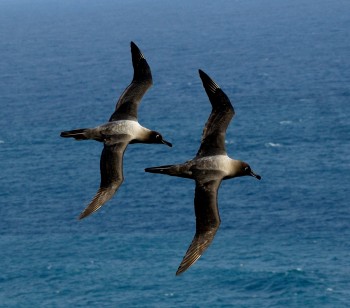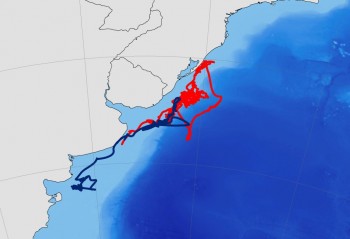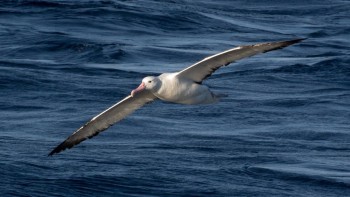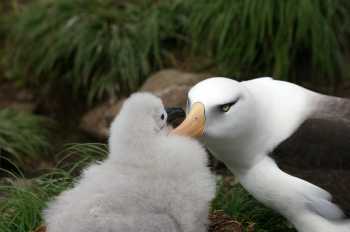The organizers of POLAR2018 are now accepting session proposals for the joint SCAR (Scientific Committee on Antarctic Research) and IASC (International Arctic Science Committee) Open Science Conference “Where the Poles meet“, which will be held in Davos, Switzerland over 19 - 23 June 2018. A template to submit session proposals, including a brief session description, the contact information of the session conveners and other details, are available on the conference website.

Antarctic-breeding Light-mantled Albatrosses fly in unison, photograph by Aleks Terauds
“We are looking for sessions that cover a broad range of topics across the spectrum of Polar and high altitude research, such as, but not limited to, climate, glaciology, social and human sciences, ice sheets, atmospheric sciences, oceanography, biology, astronomy, geology, economic aspects, sustainable development, technology and education. There will be oral and poster sessions as well as e-poster sessions with a mini-oral.
The organizing committee strongly encourages session topics that encapsulate research conducted in both the Arctic and Antarctic. We also encourage including early career scientists as conveners and encourage diversity regarding conveners’ nationalities, gender, and where possible, indigenous peoples.
The tasks of the conveners include:
- soliciting submissions for their session;
- reviewing the abstracts submitted for the session;
- working with the International Scientific Organizing Committee to arrange the programme of their session, including oral and poster presentations; and
- chairing the session.
Depending on the session proposals received, the International Scientific Organizing Committee might have to merge similar sessions where necessary and appropriate.”
Dates to remember: session proposal submission deadline: 30 November 2016; notification of lead conveners: 31 March 2017. Further deadlines can be found here.
John Cooper, ACAP Information Officer, 15 September 2016

 English
English  Français
Français  Español
Español 




